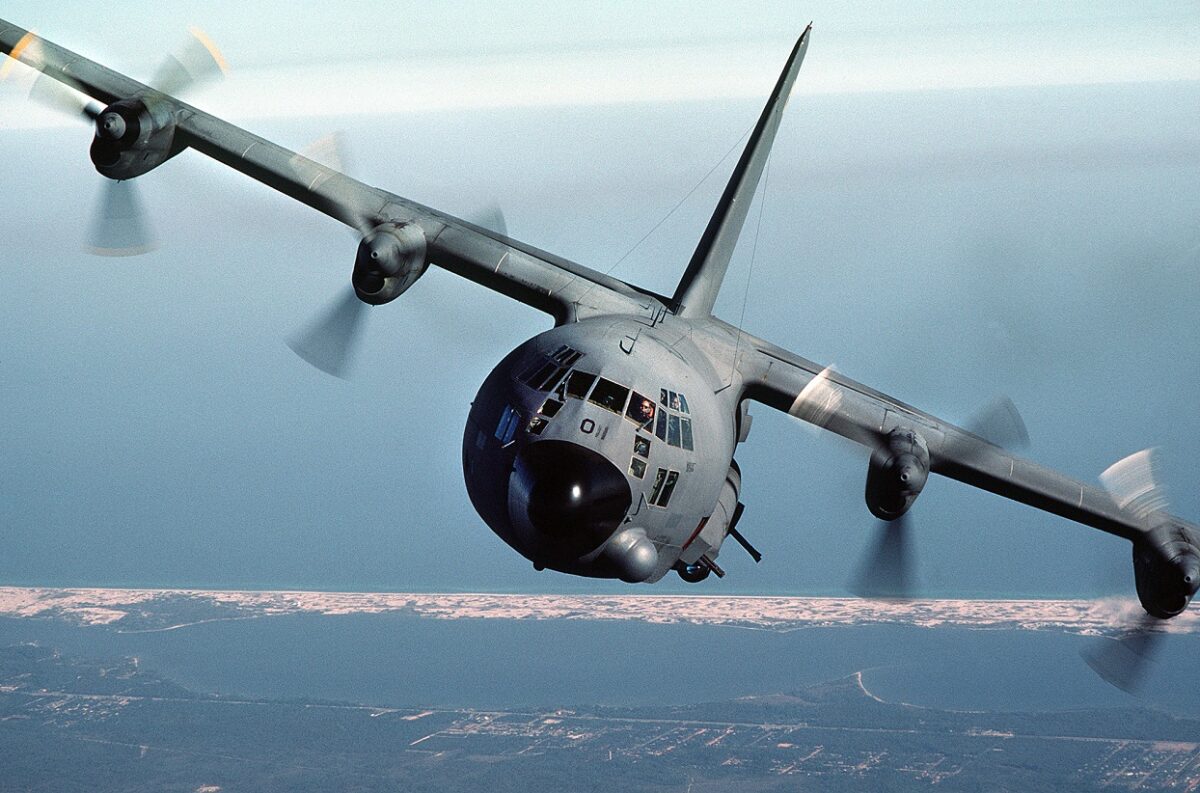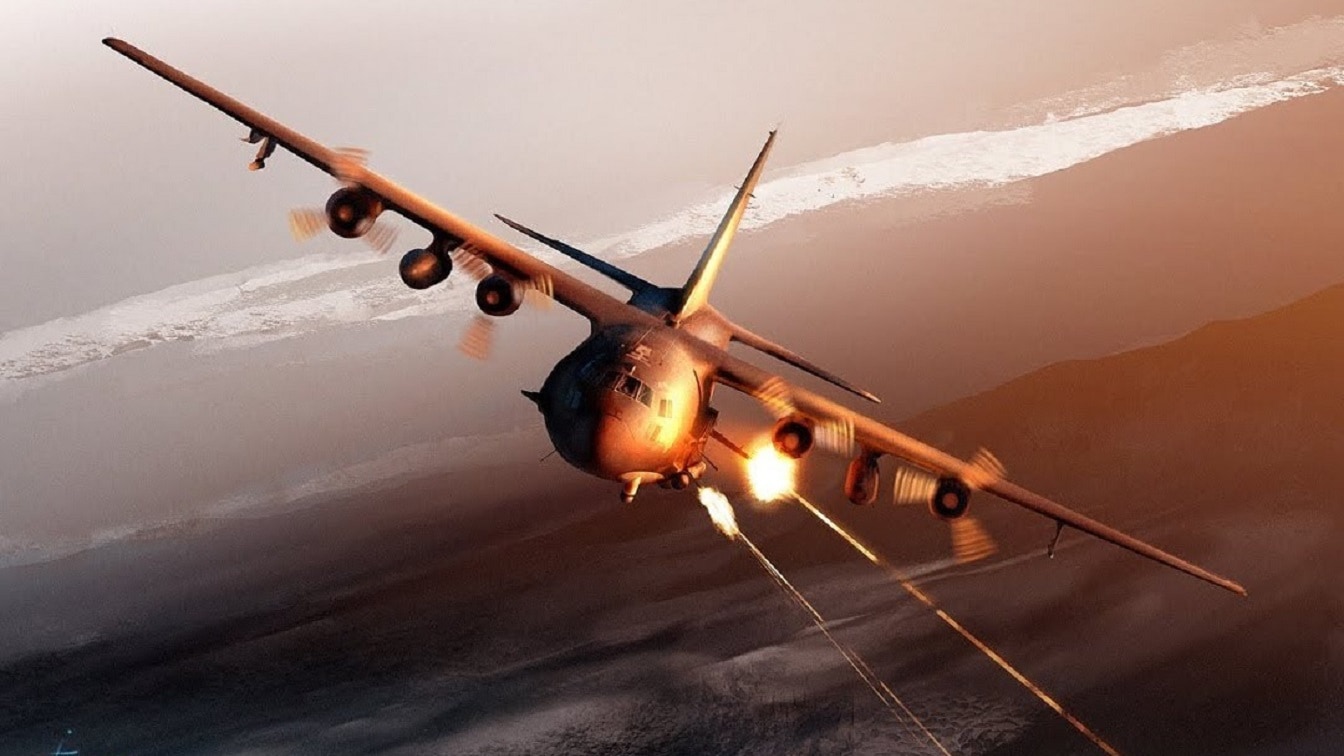The Lockheed AC-130 is a unique bird. Made famous in the Call of Duty video game series, the AC-130 is an aerial gunship, designed for long-endurance, ground-attack missions. The AC-130 is complemented with a broad selection of ground-attack weapons, suited for various mission profiles and targeting needs.
A True Warrior
Adapted from the C-130 Hercules transport aircraft, the AC-130 is visually distinct – it has several massive guns protruding from the port side, like cannons from a wooden battleship. Different versions of the AC-130, with different weaponry, have been used since the type’s debut in 1966. These include the upcoming J-variant features one 30 mm ATK GAU-23/A autocannon, one 105 mm M102 howitzer, a weapons system for AGM-176 Griffin missiles and/or GBU-44/B Viper Strike munitions. The AC-130 can also carry wing-mounted AGM-114 Hellfire missiles, GBU-39 Small Diameter Bombs (SDBs), and/or GBU-53/Bs. Options. Previous variants also included a 40 mm L60 Bofors cannon.
Capable of providing close air support, air interdiction, convoy escort, urban operations, and force protection, the plane performs counter-clockwise pylon turn around targets, which allows for continuous, accurate fire upon a fixed point on the ground – a huge improvement over traditional strafing runs.
Unlike most military aircraft, the AC-130 has an unpressurized cabin and operates at lower altitudes, typically firing weapons systems from an altitude of 7,000 feet. Because the AC-130 operates from such low altitudes, the gunship typically conducts close air support missions at night, under the cover of darkness.
To identify targets, and successfully provide precision or area-saturation firing, the AC-130 relies on a sophisticated sensor suite including an electro-optical image sensor, infrared sensor, and radar. This varied sensor suite allows the AC-130s seven person crew to differentiate between friend and foe, even in poor weather conditions.
Going to War
The AC-130 made its combat debut during the Vietnam War, where the gunship flew with a fighter escort, typically three F-4 Phantom IIs. During the conflict, six AC-130s were lost to enemy fire. The first gunship was lost in May of 1969; while “truck hunting” at 6,500 feet, the gunship took 37 mm antiaircraft (AA) fire. The incident would closely mirror the succeeding five AC-130 losses – most were lost while truck hunting, all were downed by either AA or surface-to-air missiles (SAMs). In all, 52 air crew members were lost in AC-130 crashes. AC-130 crews destroyed over 10,000 enemy trucks.
The gunship was also present, hovering above, during one of the most distinct moments in American history: the final evacuation of Saigon, on April 30, 1975.
The left-turning AC-130 has been a fixture in US warfare ever since. Against Grenada, the AC-130 suppressed enemy air-defense systems and attacked ground forces. During the US invasion of Panama, the AC-130 destroyed Panama Defense Forces headquarters while also providing close air support for US ground troops.
In Desert Storm, and through the War on Terror, the AC-130 has continuously proved its mettle.
The End of the Line?
Now, however, after fifty years of service, the plane’s future is in question. As enemy air defense systems improve, the low and slow AC-130, with its high-radar cross-section, is unlikely to survive a modern conflict against a sophisticated foe like Russia or China.
In fact, the Center for Strategic and Budgetary Assessments (CSBA) has recommended the Air Force begin pivoting away from the AC-130, instead of filling the gunship’s role with a combination of stealth aircraft and unmanned drones.

An air-to-air front view of an AC-130A Hercules gunship aircraft. The aircraft is from the 919th Special Operations Group (AFRESO), Eglin Air Force Base Auxiliary Field) 3 (Duke Field) Florida. Airman Magazine, December 1984.
Harrison Kass is the Senior Defense Editor at 19FortyFive. An attorney, pilot, guitarist, and minor pro hockey player, he joined the US Air Force as a Pilot Trainee but was medically discharged. Harrison has degrees from Lake Forest College, the University of Oregon, and New York University. He lives in Oregon and listens to Dokken. Follow him on Twitter @harrison_kass.

